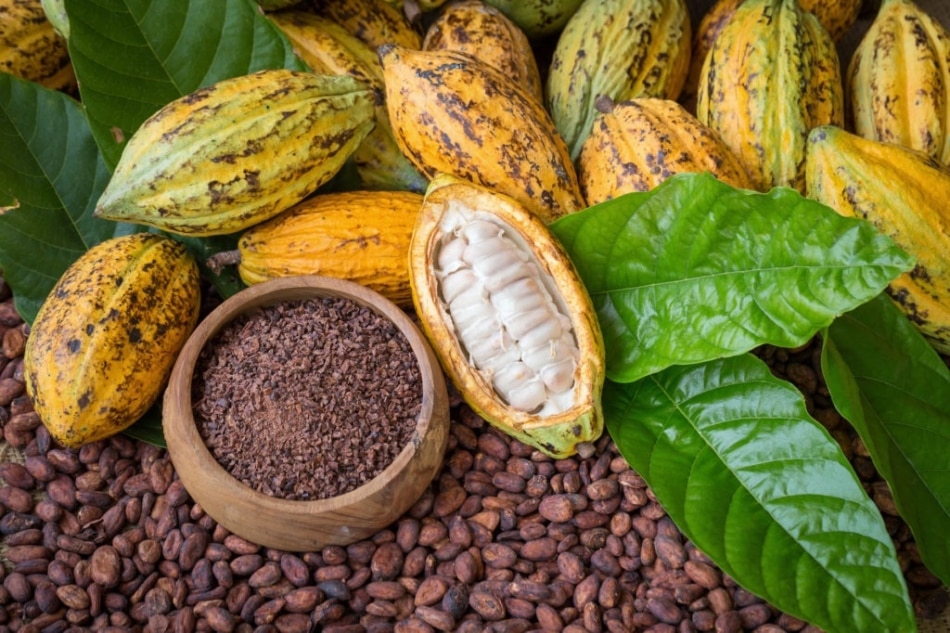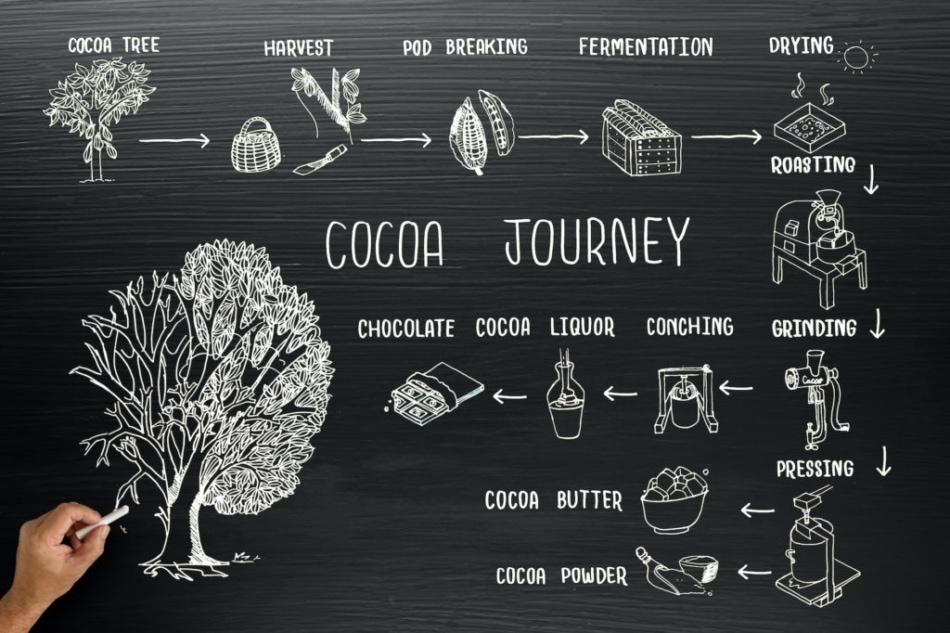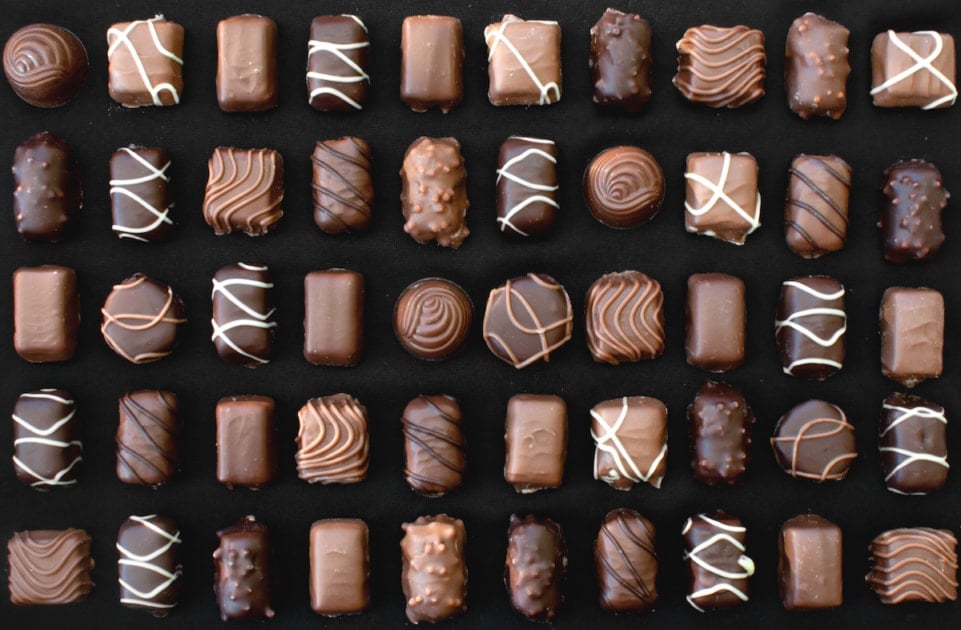The month of October is full of opportunities to indulge in yummy, chocolatey treats. Halloween is one such occasion; but before Halloween even creeps up on the calendar, you’ll have another occasion for celebrating chocolate: National Chocolate Day, on October 28th, is a holiday dedicated to enjoying all things milk, dark, and white chocolate. We dig into the ooey-gooey and sweet origins of chocolate for this very special day!
An Age-Old World-Famous Treat
Chocolate has been around for over 3,000 years. It was “born” in Central America, and can be traced back to an ancient civilization of people known as the Olmecs. The Olmecs introduced it to the Mayans, who then passed it on to the Aztecs, who then shared it with European explorers. And it was European explorers who eventually brought chocolate to Florida in the mid-1600s. Of course, back in those days, chocolate was very different than it is today. It was usually consumed as an unsweetened beverage, not a sweet, solid bar or chunk.
Where Does Chocolate Come From?

Chocolate is made from cacao beans—the seeds inside of the large, gourd-like fruit of the cacao tree, which is native to Central America. (Today, cacao trees are also grown in Africa, Malaysia, and other hot, humid locations near the Equator.) Once extracted from the cacao fruit, the beans, which are naturally quite bitter, are fermented for days. They’re then sun dried, shelled, roasted, and ground into a dark paste known as chocolate liquor. When this paste is mixed with a small amount of sugar, you get dark chocolate. To make milk chocolate, the cocoa butter (which is extracted from the compressed liquor paste) is mixed into chocolate liquor along with milk and more sugar. And white chocolate—which technically isn’t chocolate because it contains no chocolate liquor—is made by combining cocoa butter, milk, and sugar.

Heavenly and Healthy?
The Aztecs believed cacao had magical, even divine properties. In fact, the word “chocolate” originates from the Aztec “xocoatl,” which means “food of the gods” in their language. As it turns out, the Aztecs weren’t far wrong.
Today, we know that dark chocolate is rich in minerals like magnesium and zinc, and also in antioxidants—substances that shield our body’s cells from damage. Scientists say that eating 6 grams of 70% dark chocolate a day (that’s 1-2 squares) can reduce high blood pressure, high cholesterol, and the risk for diabetes. It can also reduce inflammation in the body. As if we didn’t already have enough reasons to “heart” chocolate! Can chocolate also cure a cough?
National Chocolate Day Festivities & Freebies
Whether you plan to celebrate National Chocolate Day by baking or buying chocolate, be sure to check the websites and social pages of your favorite brands—chocolatiers like Godiva, Ghirardelli, Hershey’s, Lindt, M&M’s, Nestle, and others always offer discounts, deals, and freebies on National Chocolate Day.
The gourmet foods gift retailer, Simply Chocolate, also holds an annual contest to give one lucky chocoholic the chance to win free chocolate for a year, Willy Wonka style!
Chocolatey Trivia
As you nibble on brownies and truffles, give the following fun facts about chocolate a read. We hope they’ll make your National Chocolate Day all the more mouth-watering!
- It takes approximately 400 cacao beans to make one pound of chocolate.
- In 1828, a Dutch chemist by the name of Coenraad van Houten invented Dutch cocoa powder by removing natural fats (cocoa butter) from chocolate liquor, grinding it up, and adding alkaline salts to cut its bitter taste.
- The first chocolate bar was created in 1847 by Joseph Fry, who discovered that a moldable chocolate paste could be made by adding melted cocoa butter back into Dutch cocoa.
- The first-known printed recipe for brownies appeared in The Boston Cooking-School Cookbook in 1896—although the dessert was flavored with molasses instead of chocolate! (The recipe was contributed by American cook Fannie Farmer.) Chocolate wasn’t added to the recipe until the cookbook’s 1906 edition!
- During the American Revolutionary War, chocolate was included in soldiers’ rations and was even given to soldiers in lieu of wages.
- The world’s largest Snickers candy bar was 12-feet-long, 2-feet-tall, and weighed more than two tons! And yes, it was edible.
- A four-story-high Hershey’s Chocolate Bar replica sits outside of the Hershey’s Chocolate World attraction in Niagara Falls, Ontario, Canada. (In comparison, a life-sized Hershey bar is about 6 inches tall.)
- The Lindt Home of Chocolate Museum in Zurich, Switzerland, houses one of the world’s largest chocolate fountains. At 30.5 feet tall, it holds nearly 400 gallons of real, liquid chocolate.
Other Chocolate Holidays To Nibble On
In addition to National Chocolate Day, be sure to revel in these other holidays that honor chocolate:
- National Hot Chocolate Day – January 31st
- National Chocolate Ice Cream Day – June 7th
- World Chocolate Day – July 7th
- International Chocolate Day – September 13th
- National Chocolate Candy Day – December 28th
Tempting Chocolate Recipes
Here are some helpful links to a few mouthwatering chocolate recipes, courtesy of Farmers’ Almanac!

